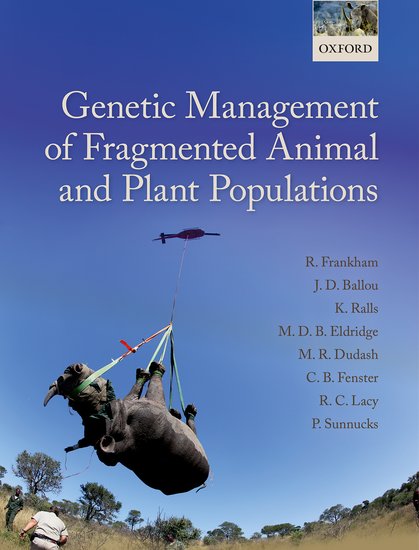Smithsonian Scientists Publish First Book on the Genetic Management of Fragmented Species Populations
The groundbreaking new book “Genetic Management of Fragmented Animal and Plant Populations,” published Sept. 13 by Oxford University Press, addresses one of today’s greatest conservation challenges.
Written by leaders of the conservation genetics field, including two Smithsonian Conservation Biology Institute scientists emeritus, Jonathan Ballou and Katherine Ralls, and a Macquarie University professor emeritus, Richard Frankham, the book presents an innovative and judicious approach to alleviating the inbreeding depression and loss of evolutionary potential that impacts millions of fragmented populations. Additional authors include Mark Eldridge, Michele Dudash, Charles Fenster, Robert C. Lacy and Paul Sunnucks.
This authoritative text is intended for senior undergraduate and graduate students interested in conservation biology, conservation genetics and wildlife management. It will also be of particular relevance to conservation practitioners and natural resource managers, as well as a broader academic audience of conservation biologists and evolutionary ecologists.
“Habitat loss and declining population sizes have resulted in millions of small, isolated fragmented populations that are or will suffer from inbreeding problems, loss of genetic diversity and reduced ability to naturally evolve to environmental changes,” Ballou said. “Building links between the fragments or moving animals between them is often not considered. This default approach of ‘no action’ needs to be changed, and that is the primary purpose of this book.”
The authors provide a new paradigm for the genetic management of fragmented populations: when two isolated populations differ genetically, the next step should be to determine whether the genetic difference is due to random genetic events in small populations (in which case the “genetic rescue” of isolated, inbred populations should be considered) or adaptation to different environments (in which case the populations should be managed separately).
While the ever-advancing field of molecular genetics continues to introduce new tools to assess population fragmentation, adequate guidance regarding the effective use of the resulting data to promote species conservation is limited. The book provides numerous examples and detailed decision trees to help managers effectively use this new information.
# # #
